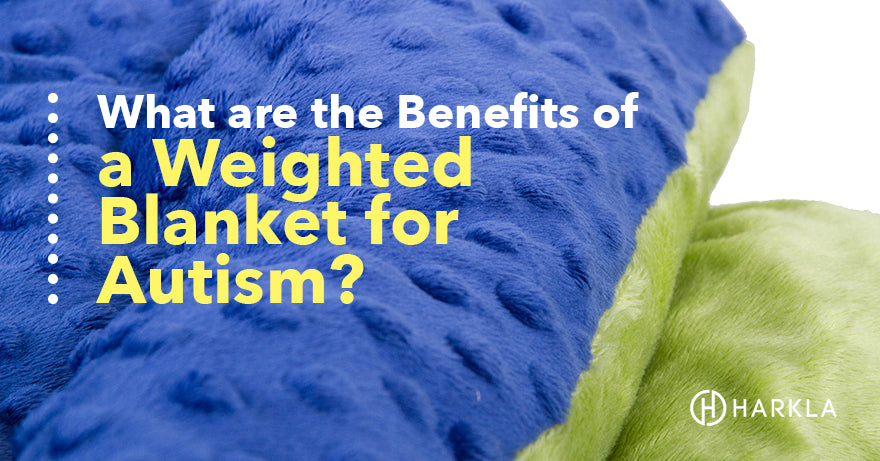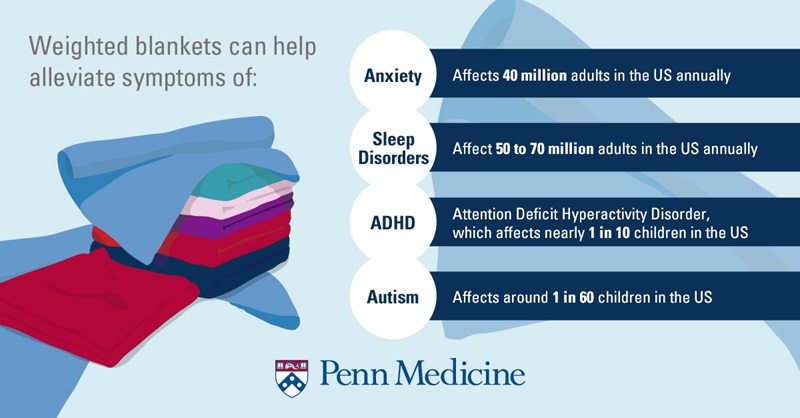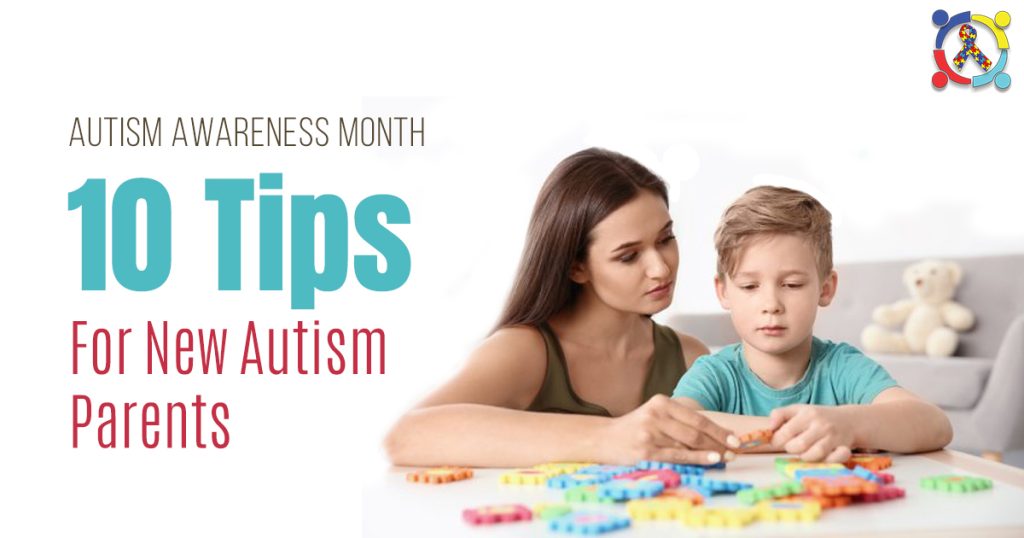Imagine finding a simple solution that could make a significant difference in the daily life of someone with autism. Weighted blankets are gaining attention for their potential to provide comfort and relief.
If you or someone you know is navigating the challenges of autism, you might be wondering how a weighted blanket could help. This article will unveil the science behind these blankets and explain how they might offer a calming touch in an often overwhelming world.
Stay with us as we explore how this seemingly ordinary item could become an extraordinary tool for enhancing well-being.

Credit: harkla.co
Sensory Processing In Autism
Children and adults with autism often face sensory challenges. Sensory processing refers to how the brain interprets information from the senses. Many individuals with autism experience sensory overload. This can lead to stress and discomfort. Weighted blankets may provide comfort through deep pressure stimulation.
Understanding Sensory Overload
Sensory overload occurs when the brain receives too much information. Bright lights, loud noises, and strong smells can overwhelm. For someone with autism, this can be distressing. They might struggle to focus or feel anxious. Weighted blankets offer a calming solution.
Role Of Deep Pressure Stimulation
Deep pressure stimulation uses firm, gentle pressure to soothe. It mimics the feeling of a comforting hug. Weighted blankets provide this pressure evenly across the body. This can help reduce anxiety and improve focus. People with autism may find them especially beneficial.
What Are Weighted Blankets
Weighted blankets provide deep pressure stimulation. This can help calm people with autism. They feel more secure and less anxious.
Weighted blankets are more than just a cozy addition to your bedding. They’ve been gaining popularity, especially for their potential benefits in helping individuals with autism. These blankets are designed to promote relaxation and improve sleep quality. But what exactly are weighted blankets, and how do they work? ###Design And Materials
Weighted blankets look similar to regular blankets but are filled with materials like glass beads or plastic pellets. These materials give the blanket its weight, which typically ranges from 5 to 30 pounds. The outer layer often features soft, breathable fabrics like cotton or fleece, ensuring comfort and durability. The design is crucial to evenly distribute the weight across your body. This uniform distribution prevents any discomfort or pressure points. If you’ve ever experienced the calming sensation of a hug, a weighted blanket aims to replicate that feeling. ###How They Work
The magic behind weighted blankets lies in deep pressure stimulation (DPS). This is a firm but gentle pressure applied across your body. DPS is known to increase serotonin and melatonin levels while reducing cortisol. These hormonal changes can lead to improved mood and better sleep. Imagine coming home after a long, stressful day and wrapping yourself in a comforting embrace. That’s what a weighted blanket can offer. It provides a soothing effect that can help calm the nervous system. This can be especially beneficial for individuals with autism who might experience heightened sensitivity or anxiety. Have you ever noticed how a simple touch can alleviate stress? Weighted blankets aim to do just that on a larger scale. They provide a consistent, reassuring presence throughout the night. This can lead to a more restful sleep and a feeling of security. Weighted blankets are not just a trend but a tool that can make a difference in everyday life. Whether you’re looking for better sleep or a way to manage stress, they offer a practical solution. Have you tried one yet, or are you considering it for someone you know?Calming Effects On The Nervous System
Weighted blankets provide deep pressure stimulation, which can soothe the nervous system. This calming effect may help individuals with autism feel more relaxed and secure. By mimicking a gentle hug, weighted blankets offer comfort and support, potentially improving sleep and reducing anxiety.
Weighted blankets have gained popularity for their calming effects, especially among individuals with autism. These blankets apply gentle pressure to the body, mimicking a comforting hug that can soothe the nervous system. This sensation can be particularly beneficial for those with autism, offering a sense of security and relaxation in moments of sensory overload or anxiety.Reducing Anxiety And Stress
Weighted blankets can be a game-changer in reducing anxiety and stress. When you feel the weight of the blanket, it signals your body to relax. This pressure helps reduce cortisol levels, the hormone responsible for stress. Imagine coming home after a long day and wrapping yourself in a weighted blanket. It can be as comforting as a warm embrace, allowing you to unwind and let go of the day’s stress. Could such a simple addition to your routine be the key to a calmer mind?Enhancing Sleep Quality
Sleep is crucial for everyone, but especially for individuals with autism who may struggle with sleep disturbances. Weighted blankets can improve sleep quality by creating a cocoon-like environment. This encourages deeper, more restful sleep. Think about how many times you’ve tossed and turned at night, unable to find comfort. A weighted blanket can provide the gentle pressure needed to ease you into a peaceful slumber. Is it time to rethink your sleep strategy for better rest? These blankets aren’t just about warmth; they’re about creating a safe space where the mind can relax. With less anxiety and better sleep, daily challenges become more manageable. Wouldn’t it be wonderful to face each day feeling refreshed and calm?
Credit: www.pennmedicine.org
Behavioral And Emotional Benefits
Weighted blankets offer calming effects for individuals with autism by mimicking deep pressure stimulation. This sensation can reduce anxiety and improve focus, aiding emotional regulation. Enhanced comfort leads to better sleep, fostering behavioral improvements and a sense of security.
Weighted blankets have become a popular tool for those seeking behavioral and emotional benefits, especially among individuals with autism. These blankets offer more than just warmth—they provide a gentle, therapeutic pressure that can support emotional well-being and behavioral improvements. Let’s explore how they can make a difference in improving focus, concentration, and emotional regulation.Improving Focus And Concentration
Many individuals with autism find it challenging to maintain focus and stay concentrated on tasks. The deep pressure stimulation from a weighted blanket can help. This type of pressure has a calming effect on the nervous system, making it easier to concentrate. Imagine trying to read a book in a noisy room. The weighted blanket acts like noise-canceling headphones, helping block out distractions. It creates a sense of security, allowing the brain to focus on the task at hand. Have you ever used a heavy quilt on a chilly night and felt instantly relaxed? The same principle applies here. This calmness can result in improved attention and better task completion.Promoting Emotional Regulation
Emotional regulation is crucial for managing daily stress and interactions. Weighted blankets can aid in managing emotions by providing a comforting sensation. This comfort can help reduce anxiety and mood swings. Think about a time when you felt overwhelmed and a warm hug made you feel better. A weighted blanket replicates that soothing hug, helping to stabilize emotions. For many parents, seeing their child calm down under a weighted blanket is a relief. It is a practical tool to help manage meltdowns and intense emotions. This emotional stability can foster better social interactions and overall well-being. Weighted blankets are not a magic cure, but they offer tangible benefits. Have you tried one yet? If not, it might be worth considering how they could help you or someone you care about.Scientific Research And Studies
Weighted blankets may calm the nervous system in individuals with autism. They provide deep pressure stimulation, which can reduce anxiety. This gentle pressure helps in enhancing focus and promoting better sleep.
Weighted blankets have gained attention for their potential benefits for individuals with autism. Scientific research and studies provide crucial insights into how these blankets can aid in autism management. Researchers have explored various aspects, such as sensory processing and anxiety reduction, to understand their impact.Research Findings
Studies indicate that weighted blankets can improve sleep quality for individuals with autism. Improved sleep leads to better daytime functioning and mood. Research also highlights their role in reducing anxiety, which is often elevated in autistic individuals. A study from the Journal of Child and Adolescent Psychiatric Nursing found that participants using weighted blankets reported lower levels of stress and increased feelings of calmness. Weighted blankets apply deep pressure touch stimulation, akin to a comforting hug. This pressure can help regulate the nervous system, promoting relaxation. It’s similar to how swaddling calms a baby, providing a sense of security. This sensory input can be particularly beneficial for those with autism, who often experience sensory processing challenges.Expert Opinions
Many experts, including occupational therapists, advocate for the use of weighted blankets in autism therapy. They believe these blankets can offer significant sensory benefits. Occupational therapist Jane Doe notes that weighted blankets can be an effective tool in sensory integration therapy. She mentions seeing positive changes in clients, such as improved focus and reduced meltdowns. Psychologists also recognize their potential. Dr. John Smith suggests that weighted blankets can be part of a comprehensive approach to autism management. He emphasizes their ability to help with self-regulation, which is crucial for individuals who struggle with emotional and sensory overloads. Consider the experiences shared by families. Parents often report positive changes in their children’s behavior after introducing weighted blankets. Could this simple tool be a missing piece in your autism management strategy? While weighted blankets are not a cure, they can be a valuable addition to a holistic approach. It’s essential to consider individual needs and consult professionals to determine the best options. Would you be willing to explore this avenue for someone you care about?
Credit: karmara.co.uk
Choosing The Right Weighted Blanket
Weighted blankets provide comfort for children and adults with autism. Choosing the right blanket is crucial for effectiveness. Several factors influence this choice. Consider weight, size, material, and texture. These elements can enhance the calming experience.
Weight And Size Considerations
A blanket should be 10% of the user’s body weight. This ensures gentle pressure that soothes without discomfort. Size is important too. The blanket should cover the body completely. It should not hang over the bed’s edges. This prevents sliding off during sleep. Proper weight and size enhance relaxation.
Material And Texture Preferences
Materials affect comfort and sensory experience. Cotton is breathable and soft. Fleece offers warmth and coziness. Texture should suit personal preferences. Some prefer smooth surfaces. Others find textured blankets soothing. Material choice can impact sensory satisfaction. Consider any allergies before purchasing. This ensures a safe and comfortable experience.
Safety And Usage Tips
Weighted blankets provide deep pressure stimulation, easing anxiety and promoting calmness for individuals with autism. Their gentle pressure mimics a warm hug, helping to improve focus and reduce stress. Always consult a healthcare professional for safety tips and appropriate usage.
Weighted blankets have gained popularity for their potential benefits in helping individuals with autism. However, ensuring safety and proper usage is crucial. Knowing how to use these blankets effectively can make a significant difference in comfort and well-being.Supervision And Monitoring
When introducing a weighted blanket to an autistic person, careful supervision is essential. Stay nearby and observe how they react to the pressure. This is especially important for children who might not be able to communicate discomfort. Consider setting a specific time for its use, such as during bedtime or relaxation periods. This routine can help the individual become accustomed to the sensation. Regularly check to ensure the blanket doesn’t cover the face or restrict movement, as safety should always be your top priority.Understanding Limitations
Weighted blankets are not a one-size-fits-all solution. Each person’s needs and preferences vary. Pay attention to the weight of the blanket; it should generally be about 10% of the user’s body weight. Assess the individual’s sensory preferences. Some may enjoy the deep pressure, while others might find it overwhelming. If the blanket causes distress, it’s crucial to reassess its use. Have you ever had a moment when a solution seemed perfect until you realized it wasn’t for everyone? Weighted blankets can be incredibly helpful, but understanding their limitations ensures they truly serve their purpose. Your attentiveness can make all the difference.Personal Stories And Testimonials
Weighted blankets have gained popularity among individuals with autism. Many users share their experiences and testimonials, highlighting the positive impact on their lives. Personal stories provide insight into how these blankets offer comfort and support. They reveal the unique ways weighted blankets can help manage symptoms of autism.
Experiences From Individuals With Autism
Many individuals with autism find relief using weighted blankets. John, a young adult with autism, says the blanket calms him during stressful times. He experiences less anxiety and sleeps better. Sarah, another user, shares that her weighted blanket helps her focus. She feels more grounded when using it during daily activities.
Some children with autism also benefit from weighted blankets. One parent describes how her son feels secure with the blanket. He enjoys a sense of safety and relaxation. These stories highlight the variety of experiences and benefits among users.
Feedback From Caregivers And Therapists
Caregivers notice significant changes in behavior with weighted blankets. A mother shares that her child is less agitated at night. The blanket improves his sleep quality and reduces nighttime wakefulness. Therapists also observe positive outcomes. One therapist notes a decrease in sensory overload during therapy sessions.
Weighted blankets are often recommended for children with sensory issues. They provide a calming effect during therapy. This feedback underscores the importance of weighted blankets in managing autism symptoms.
Frequently Asked Questions
Is A Weighted Blanket Good For Autism?
Weighted blankets can help individuals with autism. They provide deep pressure stimulation, promoting relaxation and reducing anxiety. Many find them beneficial for improving sleep quality and calming sensory overload. Always consult with a healthcare professional to ensure suitability for specific needs.
Why Does Deep Pressure Help Autism?
Deep pressure helps autism by providing calming effects, reducing anxiety, and improving focus. It activates the parasympathetic nervous system, promoting relaxation. Sensory input through deep pressure can enhance body awareness and emotional regulation, supporting individuals with autism in managing sensory sensitivities effectively.
Why Do Autistic People Like Weighted Stuff?
Autistic people often enjoy weighted items for their calming effects. These items provide deep pressure stimulation, which helps reduce anxiety and sensory overload. Weighted blankets, vests, or toys can offer comfort and improve focus, making them popular choices for those with sensory processing challenges.
How To Calm A Child With Autism?
Use sensory tools like weighted blankets or noise-canceling headphones. Create a calm environment with dim lighting. Use simple, clear communication. Establish a predictable routine to reduce anxiety. Practice deep breathing exercises together.
Conclusion
Weighted blankets offer comfort for children with autism. They provide deep pressure stimulation. This can reduce anxiety and improve sleep quality. Many families find them helpful in calming sensory overload. These blankets can be a simple tool for daily relaxation.
They are not a cure but support well-being. Consider trying one if you seek gentle support. Always consult with professionals for personalized advice. Remember, each child is unique. What works for one may not work for another. But with patience and care, benefits can be found.
Weighted blankets may offer the soothing touch needed.

